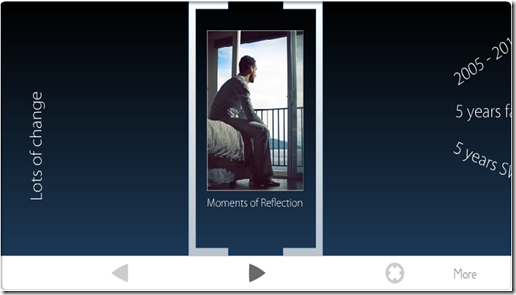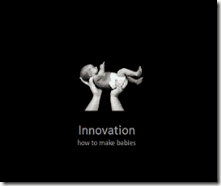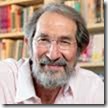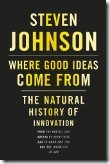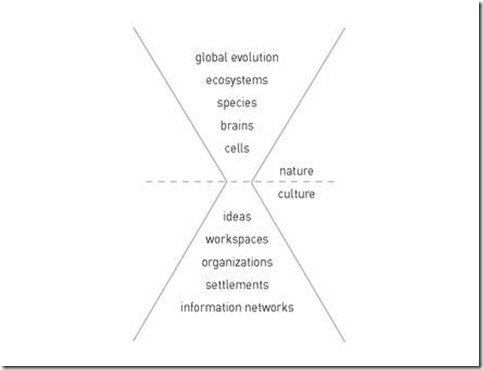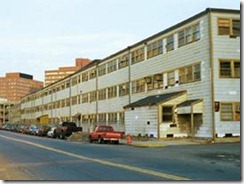In September this year, I was attending the BIF-6 Summit, in Providence, RI.
Why only report about it now ? Because they finally released the videos of the stories that were told at this year’s edition of BIF.
Next year’s edition BIF-7 dates will be 21-22 Sep 2011, unfortunately the same week as Sibos 2011 in Toronto. Wonder if we can not do something together with BIF that week at Sibos, if only sharing some of the 2011 speakers? I will give a call to Saul Kaplan. Look at the confirmed dream-list of already confirmed speakers: Danah Boyd, Lisa Gansky, John Hagel, Dan Pink, etc. Wow ! What a start, and still almost a year to go!
From this year’s edition, I suggest you take some time to go through my personal top-5:
Is it really worth daring to be great?
SY Partners chairman Keith Yamashita dares us all in this moving video story crafted as a metaphor from the Charles and Ray Eames video “Powers of Ten.” It’s a remarkable tale that reminds us that the future is here for us to create and it starts one collaborative duo at a time.
It’s worth every of it’s 25 minutes, and it’s a fantastic story about how “twins” in teams are the fuel of great teams.
- It’s about doing great things like landing the Eagle in the moon, and “turning a bunch of folks blue” back home
- It’s about having the house full of diagrams
- It’s about when you start to believe that anything is possible
- It’s about kids being born with greatness
- It’s about being fully aware and fully alive
- Trusting so deeply you can create together remarkable things
- Duo-ships are about great invitations
- Going actively after the status quo
- About systems thinking + creativity
- Building different type of organizations
- That there is a better optimum than just the first choice
- About having deep conversations on how to get smarter
- To tackle things at a societal level
- About finite/infinite resource and infinite/no possibility
- About “then” (pre-crash), and “tomorrow”: finite resource + infinite possibility
About saying
“I trust you implicitly
to do a brilliant job,
and come back
with what you learned”
About
Ending the tyranny
of false trade-offs
Who is Keith Yamashita ? All the quoted text below comes straight from the BIF site, but I have added my usual color and typographic emphasis:
When Keith Yamashita looks at the world, he sees complexity—a beautiful and rich one, if we can visualize our place within it.
As chairman of SYPartners , a consultancy that has worked with leaders at IBM, Apple, Facebook, Target, Blackstone, Target Financial Services, Bloomberg, Starbucks and The Coca-Cola Company, Yamashita is a master at helping people define themselves against the backdrop of a profoundly shifting business landscape. The task requires tremendous empathy, he says, a singular understanding of what clients need and want.
“The biggest fallacy of business is that it’s only rational,” he says. “All business is personal and all business is human.” Yamashita is intensely curious about what makes people tick. Who are they? What are their deep aspirations? What do they need to be successful? What’s holding them back?
Ambition
Love
Fear
The human component of consulting goes deep. “We hope for people what they wish for themselves,” Yamashita says. “I’d like to think that when we show up in a room, we authentically care about the people in that room and that they sense that.”
Still, it is not enough to simply identify a dream, Yamashita tells his clients. The only way to stand out is to be fully aware of how you fit into a wider spectrum, to figure out what unique part you play, given the circumstances around you.
“Because we live in a world that is more interconnected than it’s ever been, we are particularly susceptible to the dynamics at play,” Yamashita says. “People feel overwhelmed—it’s a natural outcome of the world we live in. There are more systems problems that require creativity than there are creative people in the world.”
To minimize the potential fallout from system shifts and to maximize the positive impact we can have on the world, Yamashita urges a return to authenticity. He says it’s a question of unlearning bad habits and relearning what comes naturally:
“I do believe
that people enter this world
with a certain amount of
greatness
So many people,
through the pressures
of society
or the way we’re educated,
unlearn that greatness.
They fritter it away.
They start limiting themselves.
It’s really about
reclaiming that greatness
people learning about
how to be just themselves,
fully alive and aware.”
The positive exponential effect of all this self-awareness arises when individuals begin working together. Yamashita encourages his clients to build “powerful duo relationships” that require one of the trickiest human emotions: trust. “The duo is the smallest atomic unit where trust is built,” he points out. “If there’s only two people, you can’t shovel blame.”
With competent, self-aware individuals who relate to others on the basis of that trust, an organization has the potential to expand by the power of ten, just as in the Eames film. Zooming out, Yamashita sees a universe where companies design their own destinies by connecting purposefully to a wider array of players in order to work on a tougher set of problems.
Other remarkable stories came from:
- John Hagel, with an even more personal version of his Sibos2010 talk on “The Power of Pull” and the role of passion in high-performance organizations,
- Carmen Medina, on how one can innovate in a conservative castle like the CIA,
- Jigar Shah, talking about scale in our Global Warming initiatives, and why everybody buying a Prius is really a drop in the ocean.
- Kim Scheinberg (no video available yet), who also was interviewed in the FutureofMoney video. She’s an ex-gambler and now a new wave angel investor,
- Gerard van Grinsven, (no video available yet), a former Ritz-Carlton executive, who became CEO of a hospital where it is all about health-care and not sick-care.
All these speakers indeed confirm, inspire and motivate it is really worth daring to be great.
That it is worth everyday to re-question yourself, and there to re-invent yourself to keep the greatness-bar high, very high.
And greatness is
not good enough anymore.
A program is not good enough anymore. What we need is an agenda.
“For a better world” for example.
Idealistic? Maybe.
Ambitious? Sure.
It is so easy to copy-cat last year’s success formula. But it does not satisfy myself. I believe you – readers, followers, innotribers – you expect more. You want us to surprise you, year after year.
I hope these principles will also guide us when articulating our Innotribe 2011 initiatives.

